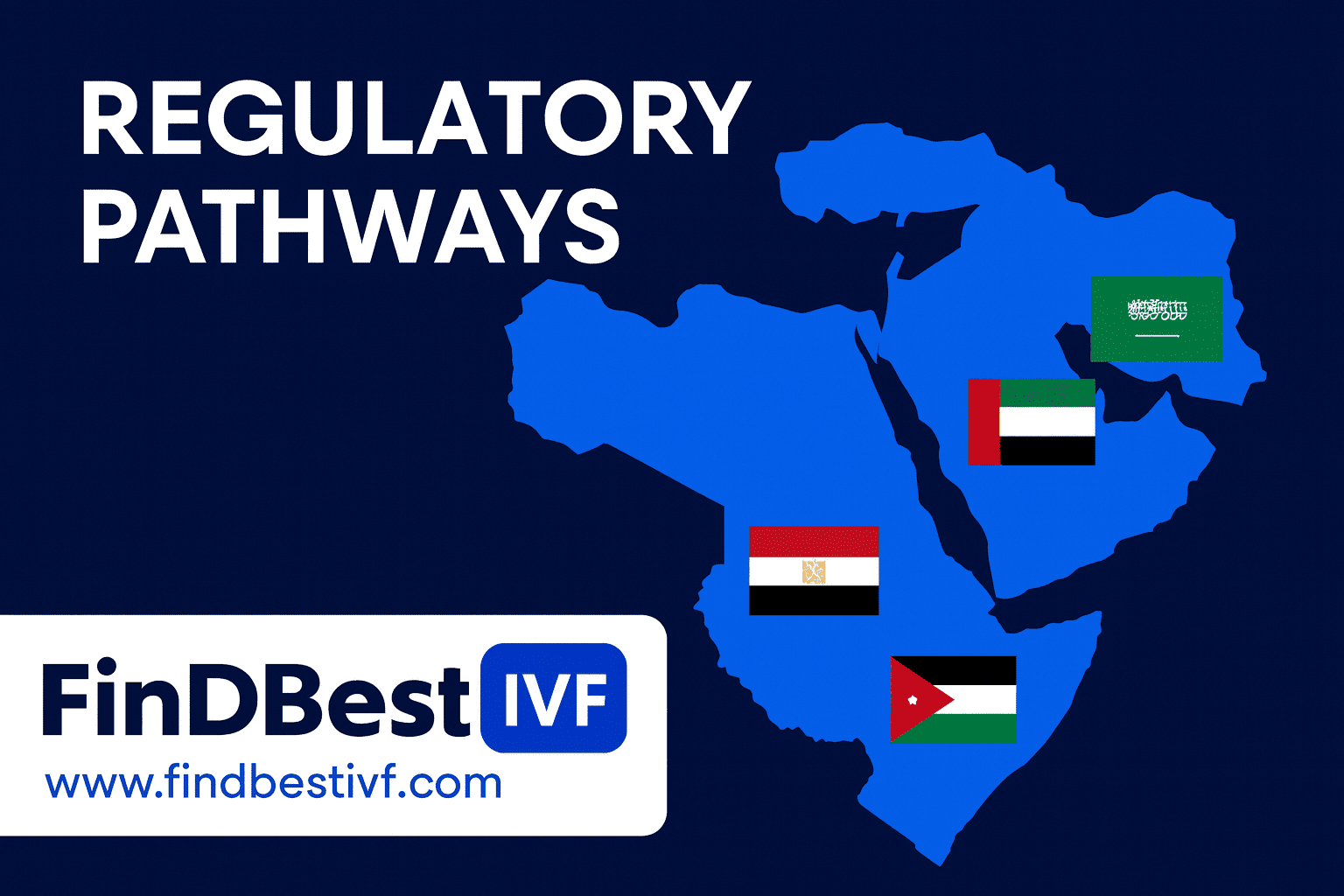Identifying “Low-Hanging Fruits” for Global Medical Device Expansion
Imagine this: Your company rocks the world of IVF and ART products. You’re making a difference domestically, but you dream of helping people build families all over the globe. Going international sounds amazing, but hang on for a second! Expanding into new markets is exciting, yet comes with its own set of challenges. This guide will help you find those awesome “low-hanging fruit” countries where your devices can thrive, leading to fewer headaches along the way.
Key Things to Think About
Is it a good fit? Let’s face it, you want to go where there’s a need for your products. How big is the IVF/ART market in the countries you’re looking at? Are there lots of people struggling with infertility? Is demand going to keep growing? Numbers are your best friends here.
- Market Potential
- Size and Growth: Let’s be honest, you want to go where the opportunity is! Research the size of the IVF/ART market in your target countries. Are there large populations facing infertility challenges? Is there projected growth in the demand for treatments? Is the local government supporting or banning the procedure? Data is your friend here. We share a lot of information already here, at FinDBest IVF (IVF Market section), but for more details, you have plenty of places to go.
- Helpful resources:
- United Nations – World Fertility data. (E.g. UN report on Mexico Infertility figures)
- World Bank
- CDC – Assisted Reproductive Technology. Although limited to the US, it shares abundant relevant information about the sector, the procedures, the trends, direct-to-patient educational information, etc.
- Market research firms specializing in healthcare with studies on IVF, Fertility or Women’s Health market. For instance, check out Grandview Research, Mordor Intelligence, Global Market Insights, The Business Research Company, McKinsey & Well Company, or MarketsandMarkets, among some sources.
- Local Fertility Associations and Societies, often collect and share, even if with some years delay, all the numbers about cycles, techniques, clinics, etc. (E.g. CDC ART data in the USA, HFEA media center for IVF/ ART data in the UK, UNSW report (latest here) for Australia and New Zealand, Ined in France or Registro SEF in Spain).
- National Governments (E.g. again in Spain, numbers gathered and analyzed by the Comisión Nacional de Reproducción Humana Asistida).
- Other sources like news outlets (E.g. The Conversation in France, CNBC for India info), articles in journals (E.g. Oxford Academics with info about low-income countries, ScienceDirect/ Elsevier with ART data for Africa) or service providers (see Fertility World blog for India IVF Fertility data).
- Economic Health Check: How’s the economy doing in your target country? Things like a strong GDP, healthcare spending on the rise, and government investing in healthcare signal a good potential market. You can visit:
- World Bank, that provides access to economic information across the globe.
- Statista, which offers figures for all relevant macroeconomic variables worldwide.
- com, for foreign exchange rates, critical to anticipate big changes in the future prices of your exported products like for instance the current situation in Turkey with inflation above 60% which can certainly damage the access of Clinics and patients to your products and therefore recommend this country for a later internationalization stage.
- Who is Who in IVF: Map out the key players – manufacturers and healthcare providers (clinics and hospitals), insurance companies, government agencies, and patient advocacy groups. Understanding who you’ll be working with helps you tailor your strategy. Again, you can find major companies and some of the clinic groups in our FinDBest IVF’s IVF Market section here.
- Trends: Identify key innovations and dynamics for the in vitro fertilization business. Apart from the information we provide at FinDBest IVF both in the IVF market section and also the blog, you can find information at local Fertility associations’ websites or connect on LinkedIn with some local Clinics embryologists, or doctors. The Fertility Atlas done between ESHRE and Fertility Europe also offers great insights into the situation of Fertility among regions and specific countries which can be a great discussion framework with potential distributors or Clinics.
-
The Regulatory Environment
Ugh, regulations… but super important! Each country has its own set of rules for medical devices. Here’s the lowdown:
Main Aspects of Regulatory Approval
- How Risky Is It?: Countries sort medical devices by risk (Class I, II, III, etc.). IVF/ART devices are often considered higher risk, which means a more complicated approval process.
- Registering Your Product: Most countries will want you to register your device with their health authorities. You’ll need to submit a whole bunch of technical info to prove your products are safe and work well.
- Quality Control: Many countries require a Quality Management System (aka a way to make sure you consistently produce awesome products). Think of certifications like ISO 13485.
- Local Clinical Trials: Sometimes, you’ll need to do clinical trials specific to a country, even if your device is already approved somewhere else.
- Staying on Track: You’ll probably need a system to track how your device performs once it hits the market and report any issues.
- Labels & Ads: Each country will have rules about how to label your product and what claims you can make in your marketing.
Where to Find the Rules:
- USA: The FDA is your go-to. Focus on their Center for Devices and Radiological Health (https://www.fda.gov/medical-devices).
- European Union: Check out the Medical Device Regulation (MDR). You might also need to work with a Notified Body – they’re the folks who check if your product meets all the MDR requirements.
- Asia-Pacific: Each country’s got its own agency. Some examples:
- China – NMPA (https://www.nmpa.gov.cn/)
- Japan – PMDA (https://www.pmda.go.jp/)
- Australia – TGA (https://www.tga.gov.au/)
Extra Tips:
- Time & Money: Regulatory stuff can take forever and cost a pretty penny. Plan for that!
- Local Help: Consider hiring a regulatory consultant specialized in your target markets – makes things way easier.
- Things Change: Rules get updated all the time. Stay updated, so you don’t get caught off guard.
Important: Regulations are complicated! It’s best to get expert advice for your specific products and target markets.

-
Infrastructure: Getting Your Products There
- Smooth Delivery: Strong transportation systems are essential for sensitive medical devices. Check out the roads, train lines, ports, and airports. Bad infrastructure means delays…and potentially damaged products. Yikes!
- Storage Matters: Does the country have suitable storage? Your devices might have specific temperature, humidity, or light requirements. Make sure there’s a safe place for them to stay until they reach the clinics.
-
Competition: Know the Landscape
- Who’s Your Competition? Do your homework on who already exists in the IVF/ART market of your target country. Find out about local companies and any big global players who are already there. What makes them successful? Where’s their weak spot? How much do they charge? How do they reach their customers? Importantly, what can you offer that they don’t?
- Culture is Key!
- Respect and Adapt: Different cultures have different views on things like fertility, starting a family, and even medical technology. Be super sensitive to local customs, values, and beliefs. This will help you with everything – how you talk about your products, design them, and even how to build relationships with potential partners in that country.
- Speak the Language (Literally!) Can you translate your product info, marketing stuff, and even your website into the local language? Clear communication builds trust, which is especially important in the healthcare field.
Smart Strategy: Start Small, Grow Big
Sure, those giant markets with fast growth rates seem tempting. But be realistic about what your company can handle, especially in the beginning. Here’s the plan:
- “Low-Hanging Fruit”: These are the countries with less complicated rules, a friendly business environment, and lots of potential for IVF/ART growth. Think of them as your starter pack!
- Asia’s Your Friend: China has a huge market, but it’s super complicated for foreign companies. Start with places like Singapore, Malaysia, Thailand, or Vietnam for a smoother initial experience with tons of room to grow.
- Build Your Base: Success in these easier-to-enter markets will give you valuable experience, local knowledge, a good reputation, and the resources to then start tackling those bigger, more challenging markets later on.
- Experiment Time: Your “low-hanging fruit” countries let you test things out! Experiment with different marketing strategies, and pricing tweaks, and get to know exactly what your customers in a new country need – without the massive pressure of a more complex market.
FinDBest IVF: Your Global Expansion Sidekick
Ready to start exploring? We’ve got your back at FinDBest IVF! Here’s how we can help you tackle these challenges and find the right partners for your expansion journey:
- Market Insights: Our IVF Market section is overflowing with information to understand the landscape of the IVF market – size, growth, key trends – it’s your starting point to know which markets are a good fit.
- The Who’s Who: Find major companies, clinic groups, and potential partners to connect with. Sign in to one of our plans and filter by country to narrow down your search.
- Stay in the Know: Our blog covers important updates, trends, and news relevant to the global IVF/ART industry.
- News: Staying in the loop about the latest tech and science breakthroughs is key for promoting your products like a pro! Plus, you might even discover awesome potential partners for your global adventure
- IVF/ ART Congresses and annual conferences: Attending industry events can be an excellent way to meet potential partners (distributors or clinics) to connect with experts, and stay ahead of the curve within the IVF sector worldwide. Your plan will give you access to the main annual meetings in the region and countries that you choose.
Expanding into new markets is an exciting adventure! Remember, preparation and finding the right partners (like us!) will set you up for a smoother journey toward global success in the IVF/ART industry. Let me know if you have any other questions.








